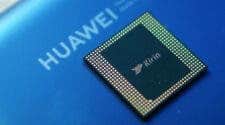Huawei, the Chinese digital technology giant, announced that 5.5G wireless broadband technology adoption is inevitable. The company believes that combining generative artificial intelligence (AI) with 5.5G will unlock new creative and economic potential in Thailand and the Asia-Pacific region.
Huawei’s Commitment to Thailand’s Digital Transformation
Abel Deng, President of Carrier Sales Business at Huawei Asia-Pacific, emphasized Huawei’s commitment to accelerating Thailand’s digital transformation through 5.5G. The goal is to help Thailand become a regional digital economy hub. Earlier this year, the global standardization of 5.5G was completed, marking a significant milestone for the technology.
“5.5G is not just about connectivity — it’s about creating a smarter, more efficient world where industries can innovate without limits,” said Mr. Deng.
Key Advantages of 5.5G
Compared to 5G, 5.5G offers a tenfold improvement in bandwidth speed, connection density, positioning accuracy, and energy efficiency. This means downlink speeds of 10 gigabits per second (Gbps), uplink speeds of 1 Gbps, hundreds of billions of connections, and built-in intelligence. These advancements will support new applications such as extended reality, the low-altitude economy, and intelligent connectivity, unlocking even greater digital benefits.
Mr. Deng highlighted these points at the Asia-Pacific ICT Summit Thailand 2024, a two-day event co-hosted by the Digital Economy and Society Ministry, Huawei, and industry partners in GSMA, a non-profit mobile network trade group.
Gizchina News of the week
Global Deployment and Support
Currently, more than 30 types of terminals support 5.5G technology, and 60 operators have commercially launched 5.5G. Countries from China to the United Arab Emirates and from Hong Kong to Oman have already deployed 5.5G on a large scale.
AI and 5.5G: A Powerful Combination
According to IT research firm IDC, AI smartphone shipments are expected to reach 170 million units in 2024. This makes up 15% of the global market. The Asia-Pacific region is predicted to lead this growth, potentially accounting for 40-50% of these shipments. To deliver the massive amounts of content expected, 5.5G is necessary. Combined with AI, 5.5G can unlock significant economic potential in the region.
“For Thailand, it is a leader in the region’s digital transformation with rapid growth in 5G adoption, driving significant advancements in the industry. With the advent of 5.5G, Thailand is on course for an even more transformative phase,” said Mr. Deng.
The Economic Impact of 5G and 5.5G
Mr. Deng noted the crucial role 5G plays in the digital economic development of all countries. Research in the Asia-Pacific region shows that every 10% increase in 5G penetration can drive 1-1.8% GDP growth.
Conclusion
Huawei’s promotion of 5.5G wireless broadband technology highlights its commitment to advancing digital transformation in the Asia-Pacific region. With significant improvements over 5G, 5.5G offers faster speeds, higher connection density, and enhanced energy efficiency. This technology, combined with AI, has the potential to unlock new economic and creative opportunities, particularly in Thailand. It is capable of becoming a regional digital economy hub. The adoption and deployment of 5.5G on a global scale signal a major shift towards smarter, more efficient connectivity and innovation.





